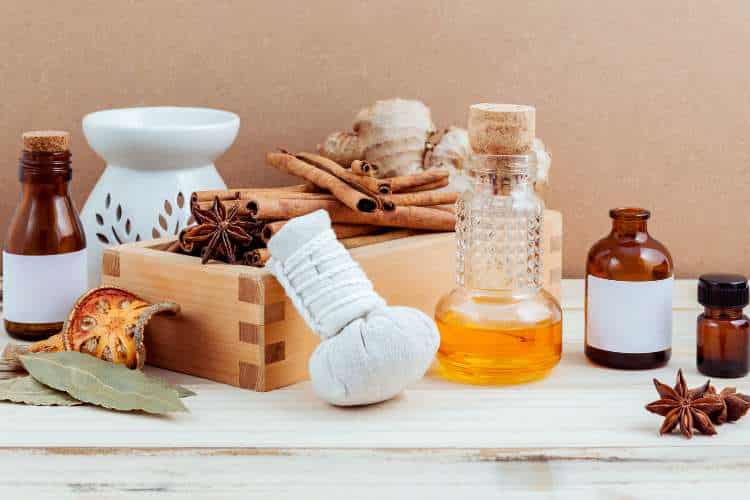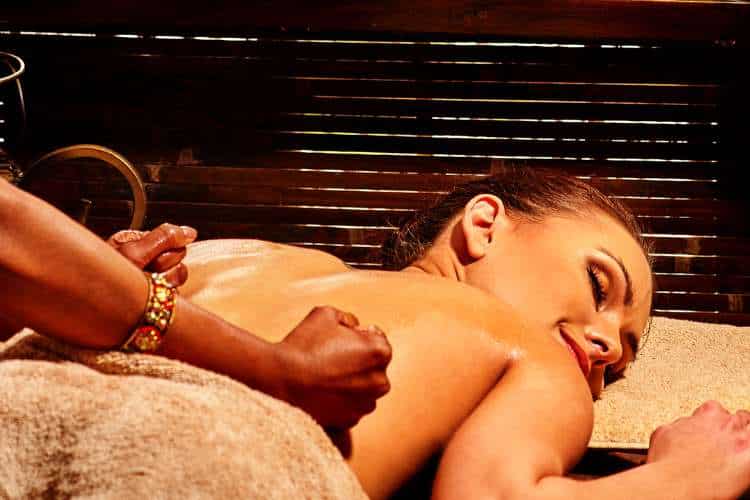Ayurvedic Treatment for Arthiritis in Coimbatore
Best Ayurvedic Treatment Pckages for Arhtirits in Coimbatore
Ayurvedic treatment for Arthritis incorporates dosha balancing panchakarma therapies, and rejuvenating joint therapies through a holistic and natural approach. Ayurveda offers a time-tested path towards healing and long-term relief.

Pure Herbal

Evidence Based

Guranteed Results
Book An Ayurvedic Treatment for Arthritis in Coimbatore
If you are looking for an Ayurvedic Treatment forArhtirits in Coimbatre Book an appointment and get free consultation.
Our Ayurvedic Arthritis Treatment Package includes
Identifying your unique Prakriti (constitution) and Vikriti (imbalance) to create a personalized treatment plan.

Assessing a person’s health and identifying imbalances by analyzing the pulse at specific points on the wrist. It helps diagnose diseases and determine the root cause of health issues.
Medications targeting the disease’s root cause incorporating anti-inflammatory, analgesic (pain-management), and rejuvenating benefits.
Detox therapies like Abhyanga (oil massage), Swedana (steam therapy), and Virechana (therapeutic purgation) Vasti (enema) helps eliminate toxins (Ama) in the body, thus eliminating joint inflammation.
Yoga asanas tailored to specific diseases help improve joint flexibility, strength, and circulation.
A tailored diet and lifestyle recommendations based on the individual constitution, digestive capacity, work-related stress, and sleep patterns to help balance aggravated Doshas.
Aim of Avanika's Ayurvedic Treatment Package for Arthirtis
- Helps manage pain with minimal reliance on painkillers.
- Alleviate discomfort, stiffness, and swelling in the joints.
- Supports improved joint flexibility and range of motion.
- Encourages mobility with reduced discomfort.
- Assists in managing inflammation.
- Helps protect joints from further deterioration
- Detoxify the body and remove accumulated toxins responsible for inflammation.
- Correct imbalances in Vata, Pitta, and Kapha Doshas, the three fundamental energies of the body.
- Strengthen the body’s natural defenses and prevent future flare-ups.
- Promotes a better quality of life

Benefits of Avanika's Ayurvedic Treatment Package for Arthirtis
- Natural approach with less dependence on painkillers causing lower side effects
- Addresses the root cause for maximum effectiveness
- Lower recurrence rates compared to conventional medicine
- Tailored therapies meeting patient specific needs, constitution, and imbalance
- Elevates physical, mental, and emotional well-being, not just joint health.

What is Arthritis?
Arthritis is an umbrella term encompassing over 100 conditions that causes damage in your joints, tissues surrounding the joint, and other connective tissues. Inflammation is the primary sign of arthritis and as a result causes pain and stiffness that can worsen with age. These conditions can vary in severity, from mild discomfort to debilitating pain and limitations in movement.
What are the Symptoms of Arthritis?
Common Symptoms of arthritis are given below
- Joint pain
- Dull ache
- Tenderness
- Stiffness, especially in the morning or after periods of inactivity
- Swelling, redness, or warmth in the affected joints
- Restricted range of motion of affected joints
- Fatigue
- In some cases, fever
Causes of Arthritis
Arthritis can develop from several factors, including:
- Infective: Often presents as monoarthritis involving a single joint caused by staphylococcus aureus, TB etc.
- Traumatic: Caused by trauma leading to haemarthrosis
- Bleeding: Occurs due to bleeding diathesis, resulting in haemarthrosis, as seen in hemophilia.
- Wear and tear: Degradation of cartilage due to aging and overuse, such as osteoarthritis.
- Metabolic: Deposition of metabolic waste products in the joints as in gout, pseudo gout, etc
- Inflammatory Pathology: Results when the immune system attacks the body’s tissues as in Rheumatoid Arthritis, Psoriatic Arthritis, and Systemic Lupus Erythematosus (SLE). Bacterial or viral infections such as bacterial endocarditis, rubella, mumps, chicken pox, hepatitis B and C can also trigger joint inflammation as in Reactive Arthritis
- Post infective: Associated with conditions like Rheumatic fever
- Genetic Predisposition: Some types of arthritis have a hereditary component.
Risk factors
- Age: The risk increases with age.
- Family History: Having a family member with arthritis can increase your risk.
- Obesity: Excess weight puts added stress on joints.
- Previous Joint Injuries: Can increase the risk of arthritis in that joint.
- Gender: Certain types of arthritis are more common in women.
- Autoimmune Disorders: Individuals with other autoimmune diseases are more prone to develop arthritis.
- Smoking: Increases inflammation and risks certain forms of arthritis.
What are the different types of Arthritis?
Osteoarthritis (OA):
Osteoarthritis is the most common type and degenerative form, characterized by the wear and tear of cartilage.
Rheumatoid Arthritis (RA):
Rheumatoid arthritis is an autoimmune disease where the immune system attacks the body’s tissues causing inflammation in multiple joints.
Gout:
Gout is a painful condition resulting from uric acid crystal deposits in the joints.
Psoriatic Arthritis:
Inflammatory Arthritis that affects around 10 to 30% of people suffering from chronic skin condition psoriasis
When to See A Doctor?
Consult a healthcare professional if you experience:
- Persistent joint pain lasting for more than a few days
- Swelling, redness, or warmth in your joints
- Stiffness that interferes with your daily activities
- Unexplained fatigue or fever alongside joint symptoms
Ayurvedic Perspective on Arthritis
Ayurveda considers Arthritis as an imbalance of the Doshas, particularly Vata, which governs movement and nerve function. When Vata dosha becomes aggravated, it can cause dryness, pain, and stiffness in the joints. Pitta dosha imbalance can lead to inflammation and heat, while Kapha dosha imbalance can cause joint swelling and stiffness.
Additionally, ama accumulation resulting from the intake of incompatible food combinations leads to low digestive fire at the tissue level, resulting in Vata, Pitta and Rakta dosha aggravation.
This causes inflammation and reduced joint function. Mild and severe type of trauma and strain lead to joint diseases. Cold weather can also aggravate joint pain and stiffness.
Ayurvedic Treatment for Arthritis
Ayurvedic treatment for joint pain includes herbal remedies, massages, yoga postures, and lifestyle modifications. The primary goal is to restore dosha equilibrium, which can be achieved through internal medicines and Panchakarma therapies.
1. Internal medications
Ayurvedic medicine uses a variety of anti-inflammatory herbs to manage joint pain. Ashwagandha, Nirgundi, and Shallaki are known for their anti-inflammatory and analgesic properties, providing relief from pain and inflammation. These herbs can be taken internally or applied topically in the form of oils or poultices.
Antah Parimarjana Chikitsa (internal medicine) plays a crucial role in balancing any remaining doshas. These therapies are effective in addressing nerve inflammation, muscle spasms, and other underlying causes while strengthening and nourishing the spine and supporting tissues.
2. Panchakarma therapies
Panchakarma therapies, and Rasayana Chikitsa are essential components of Ayurvedic treatment for joint pain. Ayurvedic massage techniques relax muscles, improve blood circulation, and promote recovery, helping to reduce inflammation. At the end of a course of joint care ayurvedic therapies, a rasayana therapy must follow to prevent recurrence and nourish the depleted tissues.
External treatments such as:
- Abhyanga (Oil Massage)
- Swedana (Sudation)
- Kati Vasti, Greeva Vasti, Prishta Vasti
- Dhanyamla Dhara, Choorna Pinda Sweda (Podi Kizhi)
- Patra Potala Sweda (Elakizhi), Shastika Shali Pinda Sweda (Njavarakizhi)
These therapies help bring vitiated doshas back to the alimentary canal, where they can be eliminated through Virechana (purgation) or Vasti (rectal enema). Along with this, Ayurvedic para-surgical treatments like Agnikarma (thermal cautery) and Raktamokshana (bloodletting) are highly effective in relieving joint pain.
Lifestyle Recommendations for Arthritis Patients
- Regular Exercise: Gentle yoga, swimming, walking to maintain mobility and strength.
- Stress Management: Practices like meditation, deep breathing, and nature walks to reduce stress-related flare-ups.
- Adequate Sleep: Aim for 7-8 hours of sleep to promote healing and reduce inflammation.
- Warm Compresses: Apply warm packs to affected joints to ease pain and stiffness.
- Proper Posture: Maintain good posture during sitting and standing to prevent joint strain.
Diet Recommendation for Arthritis Patients
- Maintain a food that is balanced with necessary minerals and other nutrients.
- Drink more water. Water helps to lubricate the joints. Consuming fruits and vegetables throughout the day as well as increasing the overall intake can help reduce inflammation of the joints.
- Never ignore the demand for calcium.
- Avoid junk foods. Fight obesity with a low-fat diet as osteoarthritis is severe with obesity.
- Stay away from the overuse of red meat, seafood, and alcohol to keep the gout away.
Nutrients that nourish and rejuvenate the joints include:
- Vitamin C: Slow the wear and tear on joints by playing a key role in the formation of collagen, which is a key component of cartilage and bone. Fruits such as grapes, papaya, oranges, mangoes, pineapples, tomatoes, and gooseberries are rich in vitamin C.
- B vitamins: Helps to reduce joint inflammation and pain. Consume foods such as lean meats and fish, eggs, whole grains, bananas and soybeans
- Vitamin E: Helps ease osteoarthritis pain and leg cramps. Vitamin E Rich Foods include almonds, dates
- Calcium and Vitamin D: Assist in prevention of additional bone loss and in maintaining healthy/strong joints. Increase the intake of milk, and milk products, eggs, and leafy vegetables.
- Anti-Inflammatory Foods: Incorporate foods like ginger, turmeric, leafy greens, berries, and fatty fish rich in omega-3 fatty acids.
- Avoid Aggravating Foods: Reduce processed foods, refined sugars, red meat, and dairy, especially if they worsen symptoms.
- Warm and Cooked Foods: Eat freshly prepared, warm, and easy-to-digest meals.
- Herbal Teas: Use ginger tea, turmeric tea, and other herbal infusions that support digestion and reduce inflammation.
Preventive Measures
- Maintain a good posture: Keep the spine erect and straight. Rest the foot parallel to the floor. Keep the hands close to body while doing computer work
- Maintain a Healthy Weight: Manage your weight to reduce stress on your joints.
- Regular Exercise: Regular physical activity will fine tune the joint structures. Don’t sit still, change positions frequently. Ideal exercise will increase vascularity to joint tissues. Exercise will enhance flexibility of joints. Never do over and unaccustomed exercises
- Frequent breaks: take frequent breaks at work, and stretch or go for a short walk
- Eat a Balanced Diet: Consume a food that is balanced with necessary minerals and other nutrients.
- Manage Stress: Sleep well to avoid unnecessary tension. Uncontrolled emotional status can affect the rhythm of joint functioning. Major joint diseases like fibromyalgia, psoriatic Arthritis respond negatively to emotional instability. Practice yoga and meditation
- Avoid Injuries: Take precautions to prevent joint injuries.
- Early Intervention: Seek medical advice at the onset of symptoms for prompt and effective treatment.
What are you waiting for...
Book an Appointment
Hours & Contact
28A Bharathi Park 7th Cross, Saibaba Colony, Coimbatore
641043
+9142229 69555
+9189039 69555
info@avanikaayurvedic.com
Open All Days 7:00 AM -7:00 PM
